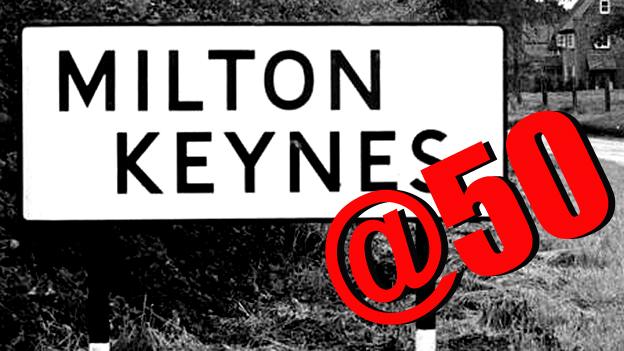Do roundabouts make Milton Keynes healthier?
- Published

Gill Bottoms always keeps her front windows shut because of her concerns about air quality in Luton
Luton and Milton Keynes are similar-sized towns producing similar levels of pollution. Yet Milton Keynes is a much healthier place to live. Might this have something to do with its infamous roundabouts?
Even on the hottest day of the year, the front windows of Gill Bottoms's semi-detached home in Luton are shut tight.
It is a security measure - not just from potential human intruders but from pollutants in the air outside.
The retired library manager moved to Luton 56 years ago, a town which a scientific air quality study recently found was one of the the worst in the country at dispersing pollution.
Three years ago, Mrs Bottoms was diagnosed with chronic obstructive pulmonary disorder (COPD).

Mrs Bottoms says because of her illness she notices variations in air quality when she takes a trip out of Luton
"I have chest problems, I can't breathe properly at times," she said. "There have been times when I cannot breathe at all and I have to call for medical assistance.
"There are times when I've been out shopping when I dare not open the windows in my car because the cars coming past, there are just so many fumes, when you're standing at traffic lights, that I just can't breathe."
Experts from Birmingham Institute for Forest Research and Lancaster University's Environment Centre recently looked at the UK's 146 most populous urban areas to find relationships between their populations, their layout and levels of pollution., external
Luton does not have the worst levels of pollution. In fact, it is roughly middling and as the scientists said they would expect for a town of its size.
But where it does fall down, according to the study, is in shifting its pollution into the air so it becomes less concentrated.
The scientists found Luton fared particularly badly because its population is crammed into a fairly small, built-up, space.

Because it is compact and densely populated, Luton struggles more than other towns to get rid of its pollution
"It (Luton) is the town that benefits least from the 'dilution effect' of converting emissions into concentrations - and it is the concentration that matters for health," said the study's lead author Professor Rob Mackenzie.
The borough council hopes a park and ride scheme, encouraging car-sharing and providing better electric car-charging facilities, external will improve air quality.
Just 23 miles down the road in Milton Keynes, the geography of the town means the air is healthier to breathe.
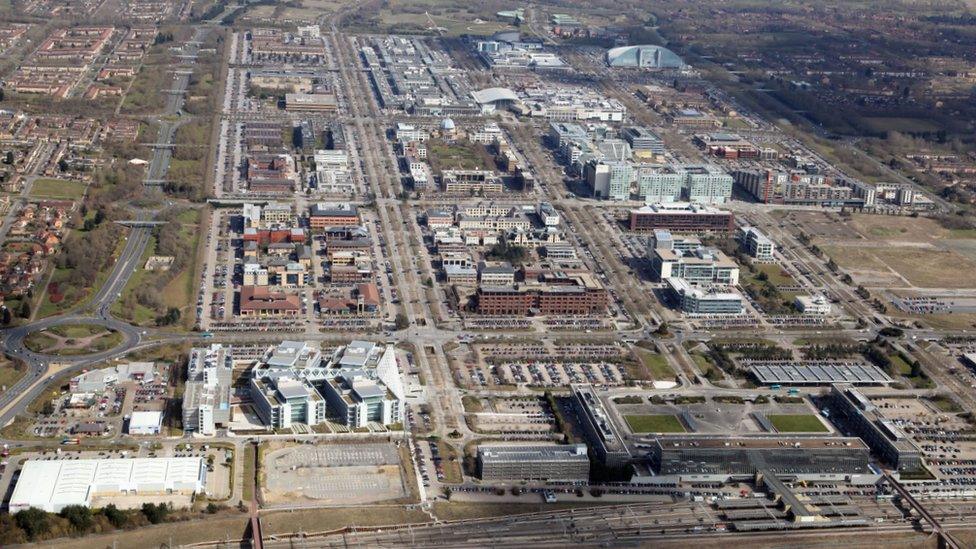
Milton Keynes' layout is best seen from the air
Often ridiculed for its endless roundabouts and its concrete cows, it now seems its 1960s design lays at the heart of its pollution-busting success.
"The Milton Keynes roundabouts do two things - they reduce stop-start driving which reduces production of pollution, and they make space to help the pollution dilute and mix away," said Prof Mackenzie.
"Milton Keynes has taken up much more space for its people and its transport which means the pollution it produces is diluted in a greater space.
"Luton is much more compact so it doesn't gain from that dilution benefit.
"The biggest effect green spaces have on air pollution in urban areas is to provide space for that pollution to disperse."
Mother-of-three Sara Millington moved to Milton Keynes a decade ago.
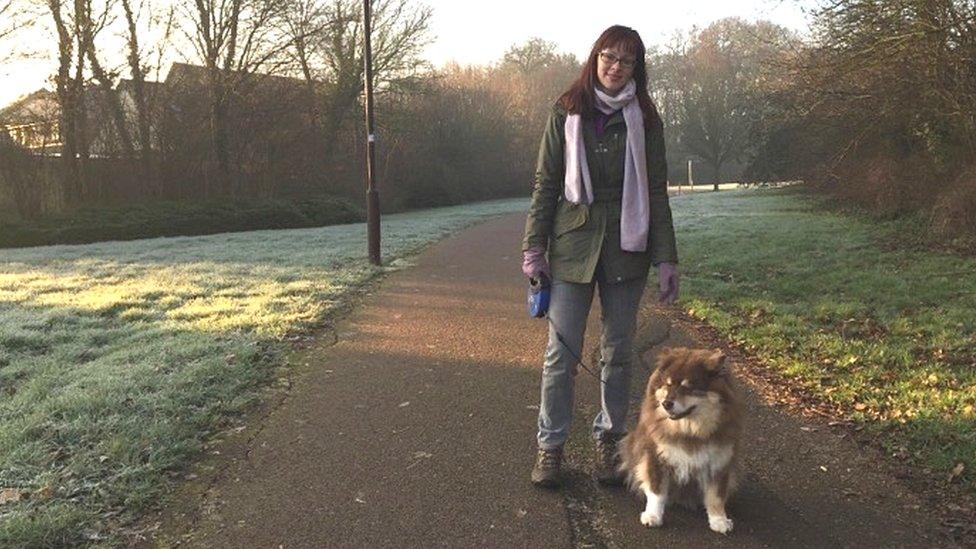
Sara Millington says Milton Keynes residents are rarely if ever stuck in traffic jams
"I used to live in Leicester and Milton Keynes just doesn't feel like a congested town at all," she said.
"You're never sat in a traffic jam inhaling other people's fumes and there are large green spaces and parks all around. It is a more spread out town.
"We've got so many people who exercise outdoors - you've got people on bikes, mums jogging with babies in buggies and really popular parkruns."
One of those exercising is Claire Horner.
"I used to live in Luton and I would never dream of exercising outside in Luton but that is what I do in Milton Keynes," she said.
"I do all of my exercise outside. It is nice fresh air. I love it."
However, local environmentalists say the town still has work to do.
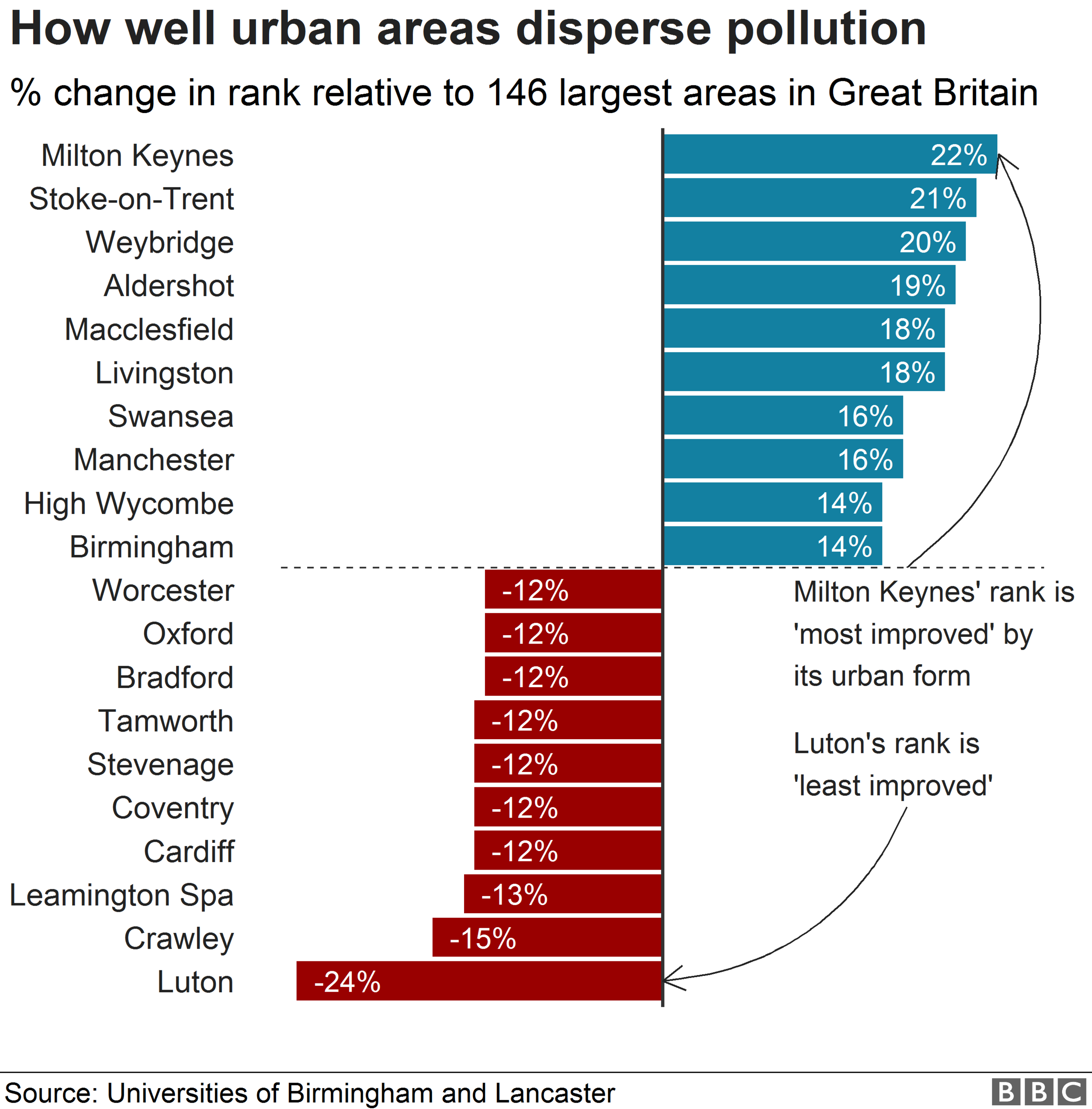
Chris Gossop, of the Two Mile Ash Environmental Group, said some areas of the town had seen denser development and trees replaced with a new underpass.
"We are aspiring to become a zero carbon community and we are going to have to do something about transport," he said.
The British Lung Foundation warns that high pollution levels not only exacerbate existing breathing problems but can also "contribute to the development of some lung conditions".
Pollution levels and how quickly they disperse can vary from street to street and hour by hour.
But given towns, once built up, cannot easily change their own design, what can they do to lower the concentrations of pollution in the air breathed by inhabitants?
Prof Mackenzie says the only option for places like Luton is to lower the overall amounts of pollution its residents and visitors emit by providing better, cleaner, public transport and moving to electric motoring.
Towns like Luton, he says, cannot "rely on the dilution effect of it being spread out to avoid the problem".
"I'd be advocating that Luton recognise that their particular situation puts them at a relative disadvantage, so they ought to work even harder at driving down emissions from traffic."
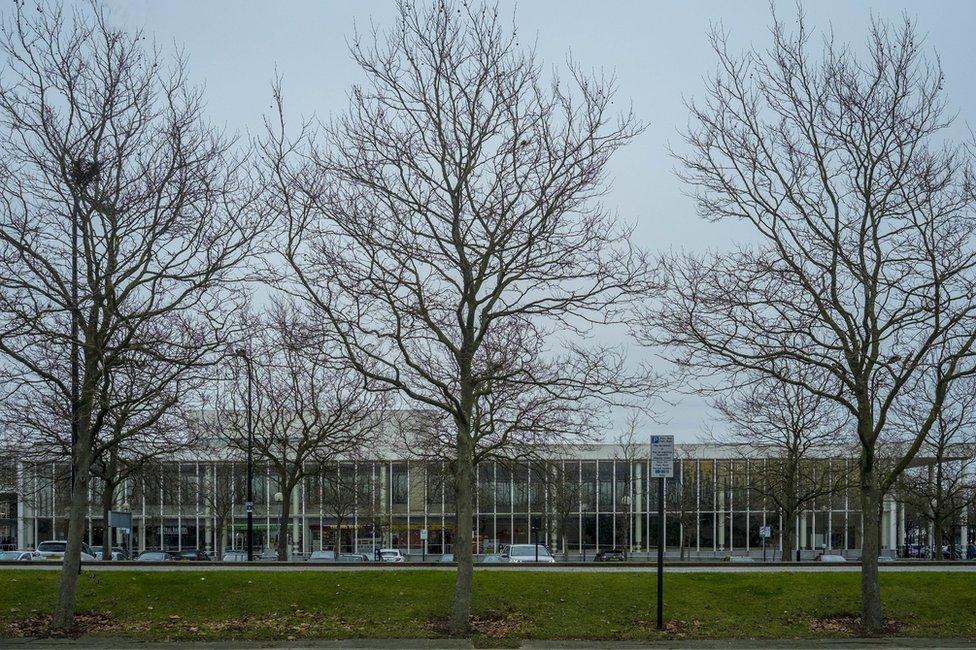
- Published23 January 2017
